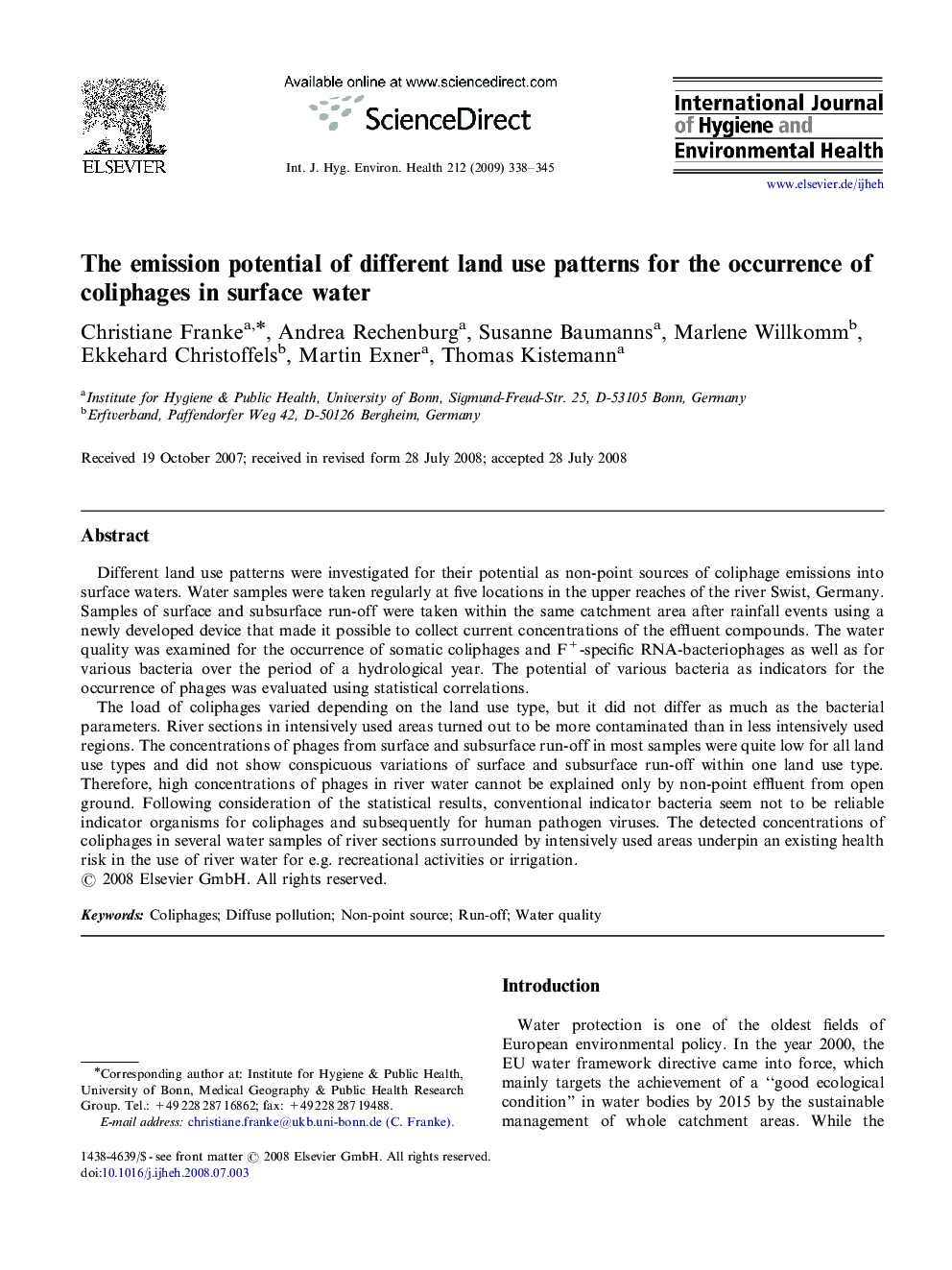| Article ID | Journal | Published Year | Pages | File Type |
|---|---|---|---|---|
| 2588859 | International Journal of Hygiene and Environmental Health | 2009 | 8 Pages |
Different land use patterns were investigated for their potential as non-point sources of coliphage emissions into surface waters. Water samples were taken regularly at five locations in the upper reaches of the river Swist, Germany. Samples of surface and subsurface run-off were taken within the same catchment area after rainfall events using a newly developed device that made it possible to collect current concentrations of the effluent compounds. The water quality was examined for the occurrence of somatic coliphages and F+-specific RNA-bacteriophages as well as for various bacteria over the period of a hydrological year. The potential of various bacteria as indicators for the occurrence of phages was evaluated using statistical correlations.The load of coliphages varied depending on the land use type, but it did not differ as much as the bacterial parameters. River sections in intensively used areas turned out to be more contaminated than in less intensively used regions. The concentrations of phages from surface and subsurface run-off in most samples were quite low for all land use types and did not show conspicuous variations of surface and subsurface run-off within one land use type. Therefore, high concentrations of phages in river water cannot be explained only by non-point effluent from open ground. Following consideration of the statistical results, conventional indicator bacteria seem not to be reliable indicator organisms for coliphages and subsequently for human pathogen viruses. The detected concentrations of coliphages in several water samples of river sections surrounded by intensively used areas underpin an existing health risk in the use of river water for e.g. recreational activities or irrigation.
